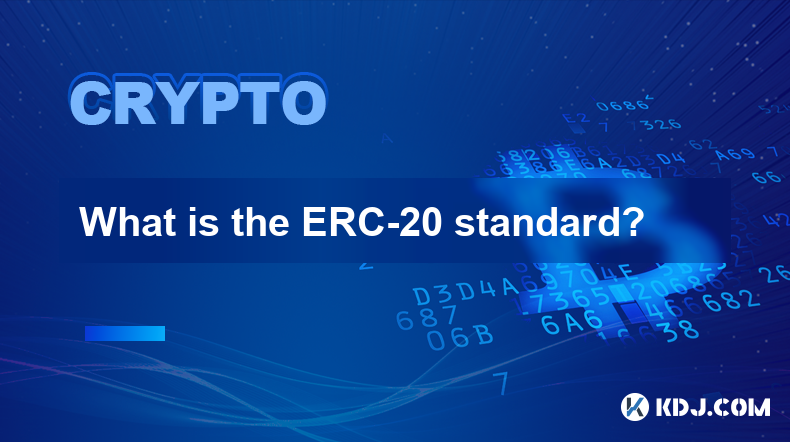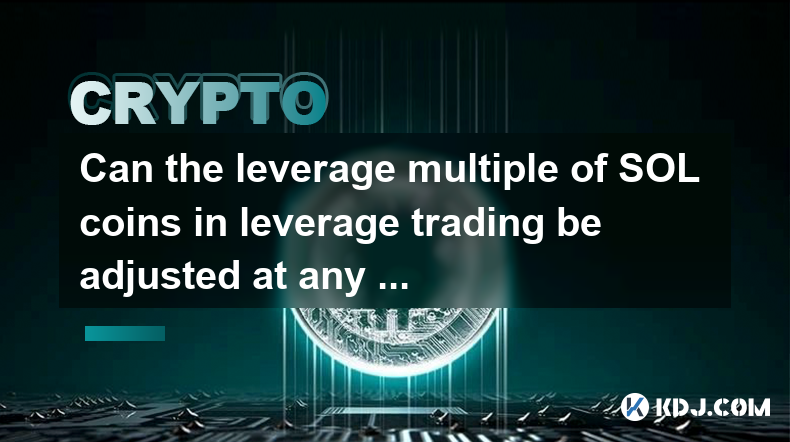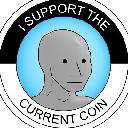-
 Bitcoin
Bitcoin $84,222.9920
4.32% -
 Ethereum
Ethereum $1,922.6054
3.43% -
 Tether USDt
Tether USDt $1.0000
0.05% -
 XRP
XRP $2.3471
5.22% -
 BNB
BNB $586.0393
2.12% -
 Solana
Solana $134.6640
10.44% -
 USDC
USDC $1.0000
0.01% -
 Cardano
Cardano $0.7360
5.64% -
 Dogecoin
Dogecoin $0.1715
5.11% -
 TRON
TRON $0.2216
-0.69% -
 Pi
Pi $1.5153
-9.35% -
 UNUS SED LEO
UNUS SED LEO $9.8288
1.19% -
 Chainlink
Chainlink $13.8193
7.63% -
 Stellar
Stellar $0.2741
1.93% -
 Hedera
Hedera $0.1912
2.30% -
 Avalanche
Avalanche $18.8153
4.90% -
 Shiba Inu
Shiba Inu $0.0...01276
7.20% -
 Sui
Sui $2.3313
9.39% -
 Toncoin
Toncoin $2.9149
6.83% -
 Litecoin
Litecoin $91.2282
4.95% -
 Polkadot
Polkadot $4.1970
7.43% -
 Bitcoin Cash
Bitcoin Cash $327.8214
0.17% -
 MANTRA
MANTRA $6.2500
-0.70% -
 Ethena USDe
Ethena USDe $0.9998
0.03% -
 Dai
Dai $1.0001
0.01% -
 Bitget Token
Bitget Token $4.4231
6.26% -
 Hyperliquid
Hyperliquid $13.7894
10.46% -
 Monero
Monero $209.2098
1.78% -
 Uniswap
Uniswap $6.0794
4.47% -
 NEAR Protocol
NEAR Protocol $2.6313
4.12%
How is ZetaChain (ZETA) coin generated?
Through Proof-of-Stake consensus, validators receive ZETA tokens as block rewards and transaction fees while staking their tokens to secure the ZetaChain network.
Dec 20, 2024 at 06:28 am

Key Points
- ZetaChain relies on the Proof-of-Stake consensus mechanism to secure its network and generate new blocks.
- ZETA tokens are distributed as rewards to validators who maintain the network and process transactions.
- Staking ZETA tokens allows users to earn passive income from network rewards and support the ecosystem.
- The ZetaChain team conducted a private token sale to raise funds for the project's development.
- ZetaChain utilizes a unique "omnichain" architecture, allowing users to transfer assets between different blockchains without the need for intermediaries or wrapping.
How is ZetaChain (ZETA) Coin Generated?
ZetaChain is a blockchain protocol designed to enable seamless communication and asset transfer across multiple blockchains. It employs a novel architecture and utilizes the ZETA token to incentivize network participants and secure its operations. Here's a detailed explanation of how ZETA coins are generated:
1. Proof-of-Stake Consensus Mechanism:
ZetaChain employs the Proof-of-Stake (PoS) consensus algorithm to validate and generate new blocks on its network. Under this mechanism, users stake their ZETA tokens to participate in the consensus process and become validators. Validators are responsible for verifying and adding new blocks to the blockchain, receiving rewards in the form of ZETA tokens for their efforts. The more ZETA tokens a validator stakes, the higher their chances of being selected to participate in block validation and earning rewards.
2. Block Rewards and Transaction Fees:
Validators in the ZetaChain network receive two primary sources of income: block rewards and transaction fees. Block rewards are generated when a new block is added to the blockchain, consisting of newly minted ZETA tokens and fees collected from users for executing transactions. The block reward is distributed among the validators who participated in the block's creation, proportional to their stake in the network. Transaction fees are also collected from users who initiate transactions on the ZetaChain network and are distributed among active validators.
3. Staking Rewards:
By staking their ZETA tokens, users can participate in the consensus process and earn passive income from network rewards. When a validator successfully validates a block or participates in other network operations, they are rewarded with ZETA tokens. Some exchanges, such as Binance and Coinbase, offer staking services that allow users to stake their ZETA tokens and earn rewards without running their own validator nodes. Staking ZETA tokens not only contributes to network security but also provides an opportunity for users to generate passive income.
4. Token Sale and Initial Distribution:
ZetaChain conducted a private token sale to raise funds for the project's development and ecosystem growth. The token sale attracted investors who shared the vision of a blockchain that seamlessly connects different ecosystems. During the token sale, investors purchased ZETA tokens using other cryptocurrencies or fiat currencies. The funds raised from the token sale were used to cover development costs, expand the team, and support the network's initial launch.
5. Omnichain Architecture:
ZetaChain's unique omnichain architecture plays a critical role in facilitating cross-chain communication and asset transfer. ZetaChain uses a specialized layer, known as ZetaHub, to connect different blockchain networks. This layer handles inter-blockchain communication, allowing users to send assets and messages from one blockchain to another without the need for intermediaries or wrapping. The omnichain architecture simplifies cross-chain transactions, providing a user-friendly experience and broadening the network's utility.
FAQs
What is the purpose of the ZETA token?
The ZETA token serves multiple purposes within the ZetaChain ecosystem. Primarily, it is used to reward validators who contribute to the network's security and consensus by staking their tokens. Staking ZETA also allows users to participate in the governance of the network and vote on proposed changes. Additionally, ZETA tokens are used to pay transaction fees for cross-chain transfers, facilitating the exchange of assets and messages between different blockchains.
Can I stake my ZETA tokens to earn rewards?
Yes, you can stake your ZETA tokens to participate in the consensus process and earn passive income from block rewards and transaction fees. Staking can be done through a variety of means, including running your own validator node or using a staking service offered by exchanges. The more ZETA tokens you stake, the higher your chances of being selected to validate blocks and receive rewards.
How does ZetaChain ensure the security of its network?
ZetaChain employs a combination of advanced cryptographic techniques, consensus algorithms, and specialized protocols to ensure the integrity and security of its network. The Proof-of-Stake consensus ensures that validators who participate in block validation are incentivized to act honestly, as any malicious behavior could lead to the loss of their staked tokens. Additionally, ZetaChain uses multi-party computation (MPC) techniques to secure its cross-chain bridges, further enhancing the security of its cross-chain communication and asset transfer mechanisms.
Does ZetaChain have a finite supply of ZETA tokens?
Currently, the total supply of ZETA tokens is capped at 1 billion. This limit ensures that the generation of new tokens through staking rewards and other means is controlled, preventing excessive inflation and preserving the value of the token over time. The limited supply also enhances the token's scarcity, potentially creating demand-based pressure and price appreciation in the long run.
How can I stay updated with the latest developments in the ZetaChain ecosystem?
To stay updated with the most recent advancements, community news, and technical updates, you can follow ZetaChain through various channels. The project maintains an active presence on Twitter, Telegram, Medium, and GitHub, where announcements, technical updates, and community discussions are regularly shared. Additionally, the ZetaChain website offers comprehensive documentation and resources for users, developers, and community members alike.
Disclaimer:info@kdj.com
The information provided is not trading advice. kdj.com does not assume any responsibility for any investments made based on the information provided in this article. Cryptocurrencies are highly volatile and it is highly recommended that you invest with caution after thorough research!
If you believe that the content used on this website infringes your copyright, please contact us immediately (info@kdj.com) and we will delete it promptly.
- BinoFi (BINO) Is Rapidly Becoming the Name on Everyone's Lips
- 2025-03-15 06:35:53
- Pakistan Officially Launches Crypto Council to Accelerate Digital Transformation
- 2025-03-15 06:30:54
- XRPTurbo: Merging Cutting-Edge AI with Blockchain Technology to Transform the DeFi Landscape
- 2025-03-15 06:30:54
- Ray LaMontagne Announces 'Trouble' 20th Anniversary Tour
- 2025-03-15 06:30:54
- The cryptocurrency space is packed with thousands of projects
- 2025-03-15 06:30:54
- Ethena (ENA) Surpasses PancakeSwap and Jupiter to Become the Third Largest Protocol by Daily Fees
- 2025-03-15 06:25:53
Related knowledge

Which cryptocurrency websites are good for beginners?
Mar 14,2025 at 04:48pm
CoinbaseUser - friendly Interface: Coinbase offers a clean and intuitive interface that is easy for beginners to navigate. The platform is designed to be straightforward, with clear instructions for tasks like creating an account, depositing funds, and buying/selling cryptocurrencies. For example, when you log in, you are greeted with a dashboard that s...

How much will Bitcoin be worth in 2025
Mar 14,2025 at 04:23pm
Predicting the value of Bitcoin in 2025 is an extremely complex task. Bitcoin, as the pioneer of cryptocurrencies, has a price influenced by a vast array of factors, ranging from market dynamics and technological advancements to regulatory changes and global economic conditions.Market Supply and DemandLimited Supply: Bitcoin has a capped supply of 21 mi...

What are the main functions of ERC-20 tokens?
Mar 13,2025 at 12:21am
Key Points:ERC-20 tokens are standardized tokens built on the Ethereum blockchain, enabling interoperability and ease of use.Their primary function is to represent fungible assets, meaning each token is interchangeable with any other of the same type.ERC-20 tokens facilitate various use cases, including fundraising (ICOs/IEOs), representing in-game asse...

How are ERC-20 tokens created on the Ethereum blockchain?
Mar 13,2025 at 01:30pm
Key Points:ERC-20 tokens are created by deploying a smart contract to the Ethereum blockchain.This smart contract defines the token's properties, such as name, symbol, total supply, and decimals.Several tools and platforms simplify the process, including online IDEs and dedicated token creation services.Understanding Solidity programming is crucial for ...

What is the ERC-20 standard?
Mar 12,2025 at 06:30pm
Key Points:The ERC-20 standard is a technical specification for creating tokens on the Ethereum blockchain.It defines a common set of rules and functions that all ERC-20 tokens must adhere to.This standardization facilitates interoperability and ease of use for developers and users.Understanding ERC-20 is crucial for anyone involved in Ethereum-based to...

Can the leverage multiple of SOL coins in leverage trading be adjusted at any time?
Mar 13,2025 at 10:16pm
Key Points:Leverage multiples in SOL futures trading are generally not adjustable during an open position. Adjustments are usually only possible before entering a new trade or after closing the existing position.The specific rules regarding leverage adjustment vary significantly between different cryptocurrency exchanges. Each platform sets its own para...

Which cryptocurrency websites are good for beginners?
Mar 14,2025 at 04:48pm
CoinbaseUser - friendly Interface: Coinbase offers a clean and intuitive interface that is easy for beginners to navigate. The platform is designed to be straightforward, with clear instructions for tasks like creating an account, depositing funds, and buying/selling cryptocurrencies. For example, when you log in, you are greeted with a dashboard that s...

How much will Bitcoin be worth in 2025
Mar 14,2025 at 04:23pm
Predicting the value of Bitcoin in 2025 is an extremely complex task. Bitcoin, as the pioneer of cryptocurrencies, has a price influenced by a vast array of factors, ranging from market dynamics and technological advancements to regulatory changes and global economic conditions.Market Supply and DemandLimited Supply: Bitcoin has a capped supply of 21 mi...

What are the main functions of ERC-20 tokens?
Mar 13,2025 at 12:21am
Key Points:ERC-20 tokens are standardized tokens built on the Ethereum blockchain, enabling interoperability and ease of use.Their primary function is to represent fungible assets, meaning each token is interchangeable with any other of the same type.ERC-20 tokens facilitate various use cases, including fundraising (ICOs/IEOs), representing in-game asse...

How are ERC-20 tokens created on the Ethereum blockchain?
Mar 13,2025 at 01:30pm
Key Points:ERC-20 tokens are created by deploying a smart contract to the Ethereum blockchain.This smart contract defines the token's properties, such as name, symbol, total supply, and decimals.Several tools and platforms simplify the process, including online IDEs and dedicated token creation services.Understanding Solidity programming is crucial for ...

What is the ERC-20 standard?
Mar 12,2025 at 06:30pm
Key Points:The ERC-20 standard is a technical specification for creating tokens on the Ethereum blockchain.It defines a common set of rules and functions that all ERC-20 tokens must adhere to.This standardization facilitates interoperability and ease of use for developers and users.Understanding ERC-20 is crucial for anyone involved in Ethereum-based to...

Can the leverage multiple of SOL coins in leverage trading be adjusted at any time?
Mar 13,2025 at 10:16pm
Key Points:Leverage multiples in SOL futures trading are generally not adjustable during an open position. Adjustments are usually only possible before entering a new trade or after closing the existing position.The specific rules regarding leverage adjustment vary significantly between different cryptocurrency exchanges. Each platform sets its own para...
See all articles






















































































